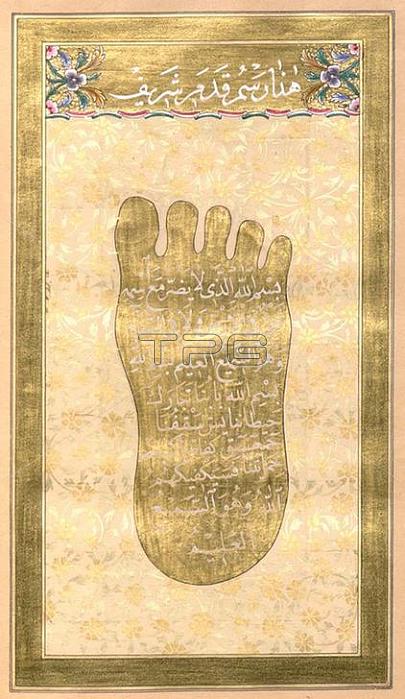
From an illuminated Ottoman dua kitabi or 鈥榩rayer book' by Hasan Rashid (Istanbul; 1845) once the property of a Topkapi harem lady. The footprint of Muhammad is said to be the impression of a foot upon a square fragment of calcareous stone. It is believed to be that of Muhammad; indented by him at the moment he was assisting the masons to raise a heavy stone for the building of the Ka'aba. According to another tradition it was made when Muhammad placed his left foot in the stirrup of the celestial mount Buraq.
The Arabic term 鈥榙u'a' is generally translated into English as 鈥榩rayer'; though a more exact rendering would be 鈥榮upplication'. The term is derived from an Arabic word meaning to 'call out' or to 'summon'; and Muslims regard this as a profound act of worship. This is when Muslims connect with God and ask him for forgivness or appeal for his favour. The Prophet Muhammad is reported to have said 鈥楧ua is the very essence of worship'; while one of Allah's commands expressed through the Qur'an is for Muslims to call out to Him: 'Call to Me; I will answer your prayers'.
There is a special emphasis on du'a in Muslim spirituality and early Muslims took great care to record the supplications of Muhammad and transmit them to subsequent generations. These traditions precipitated new genres of literature in which prophetic supplications were gathered together in single volumes that were memorized; taught - and treasured.
| px | px | dpi | = | cm | x | cm | = | MB |
Details
Creative#:
TOP19389041
Source:
達志影像
Authorization Type:
RM
Release Information:
須由TPG 完整授權
Model Release:
No
Property Release:
No
Right to Privacy:
No
Same folder images:

 Loading
Loading